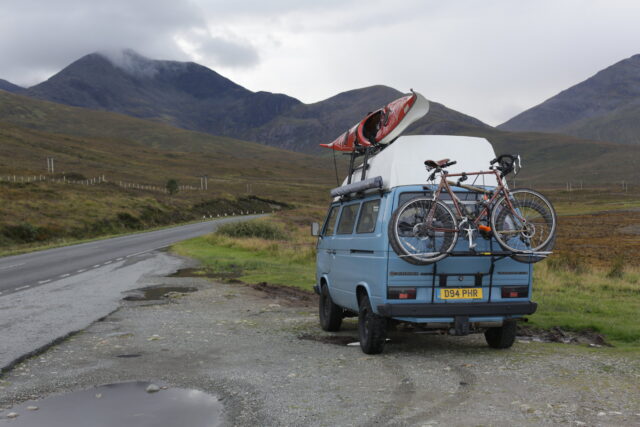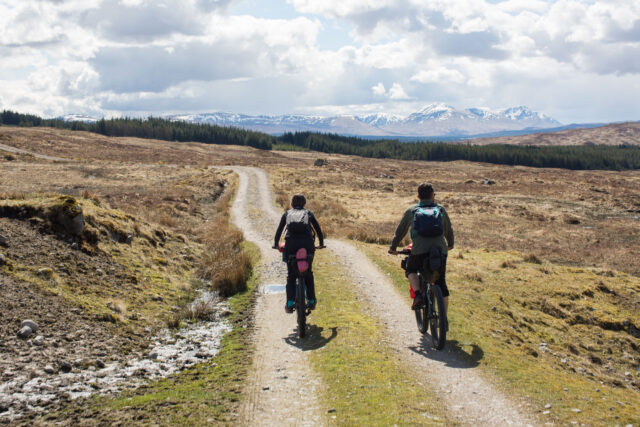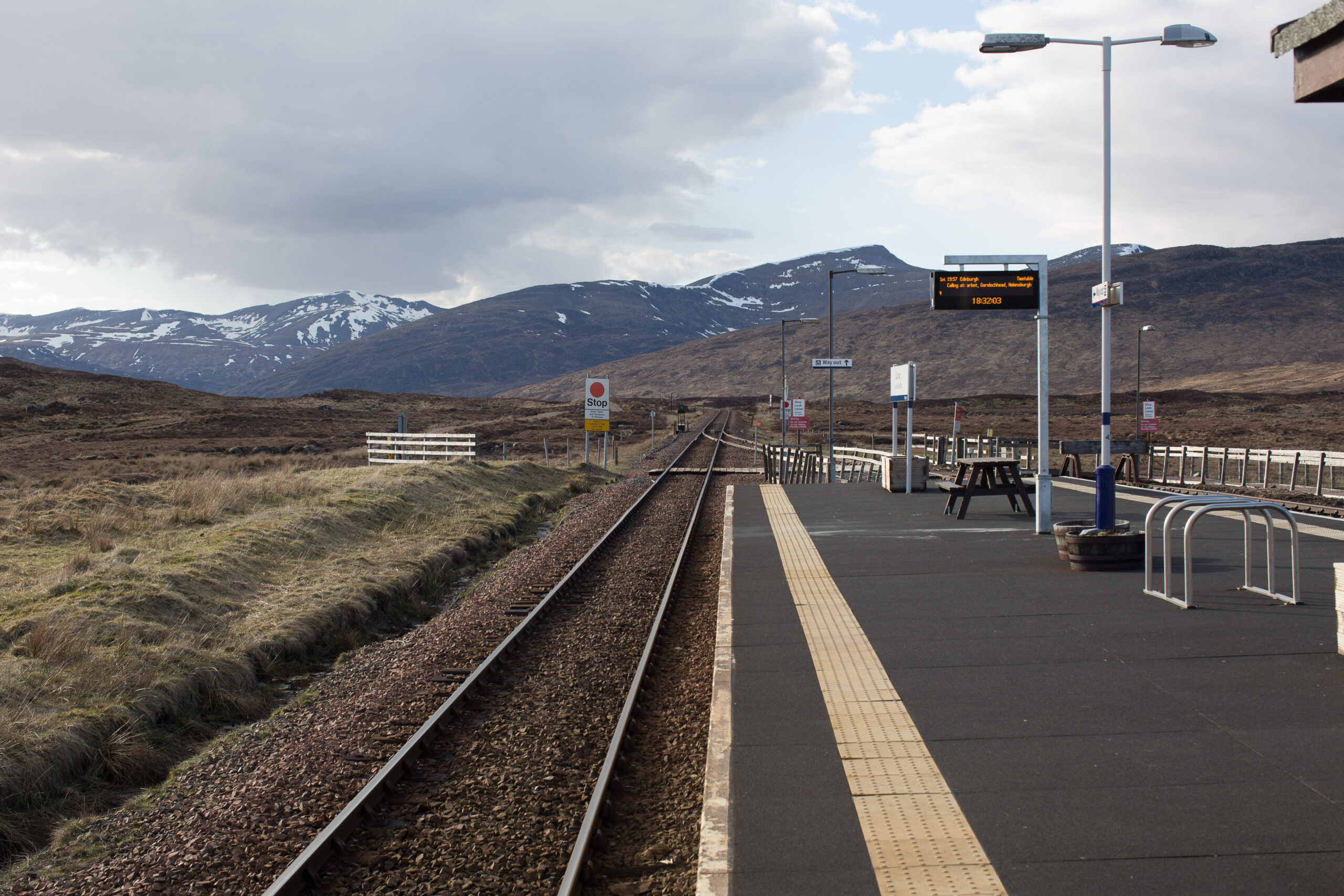Scotland is often included in the top 10 most beautiful countries in the world, and for good reason. I still remember the feeling of complete disbelief as I drove up the country’s west coast for the first time. How could these landscapes possibly be adjoined to the same landmass as England? The stark contrast left my jaw agape, mouth dry, eyes transfixed—every corner predated with a cocktail of excitement and adrenaline. There were mountains as far as the eye could see, dramatic coastlines, mysterious lochs, deep valleys, dense forests, formidable castles, and vast expanses of uninhabited moorland. I was completely and utterly in love. Visiting simply wasn’t enough, and one year later, I packed the van and started a job on the Isle of Skye. I lived in Scotland for two years and spent most of my time in the mountains or sea kayaking, but crucially, I discovered the Highlands to be a bikepacking Valhalla.

I’ve enjoyed various cycling adventures in Scotland, but the most notable was exploring the Cairngorms. This national park stretches 4,528 kilometres (1,748 square miles), is home to a quarter of the country’s native forest, one-third of the UK’s land above 600 metres, many of the UK’s rare or endangered species, and is adventure cycling perfection. Forestry tracks, gravel roads, singletrack, dedicated cycle paths, old paved roads, boggy moorland, technical scrambles, and beautiful bothies (mountain shelters) offer all the ingredients for an epic two-wheeled adventure. I was fortunate to be joined on this particular ride by two bikepacking gurus and good friends. Bart and Michalina (who live adjacent to the Cairngorms) spend most weekends exploring this epic national park. Bart has a reputation for being a route master but also for almost always avoiding the easiest option. Thus, I was in for some steep climbing, knee-deep bogs, unrideable singletrack, and a lot of good laughs, mostly at my expense! However, what made this trip particularly special was the opportunity to stay in a selection of beautiful mountain bothies.



A bothy is a basic shelter, left unlocked and available for anyone to use free of charge. They’re generally found in the mountainous regions of the United Kingdom, and many were historically a place of refuge for shepherds, farm labourers, or estate workers (many countries around the world have similar). The condition and facilities available vary drastically, but in the words of the Mountain Bothies Association (MBA), “Holiday homes they are not. Camping without a tent is closer to the mark.” The MBA (mountainbothies.org.uk), founded in 1965, exists to maintain remote buildings that owners have little or no use for, yet remain a fantastic refuge for those enjoying the mountains. The maintenance work is financed via their own resources, much of which is through membership subscriptions and donations. I really love the MBA; it’s a great organisation whose work is so meaningful to the outdoor community. As discussed above, these shelters are not holiday homes, and it’s important to assume there will be no facilities. According to the MBA, there is “no tap, no sink, no beds, no lights, and, even if there is a fireplace, perhaps nothing to burn. Bothies may have a simple sleeping platform, but if busy, you might find that the only place to sleep is on a stone floor.” Okay, so not five-star, but as someone who loves tenting, a bothy is the most luxurious of abodes.


I remember one evening on our ride—darkness fast approaching and torrential rain soaking us through—finally spotting a quaint bothy on the shores of a loch. I can’t put into words the sheer bliss of opening the door on that little building, getting cosy inside, and bedding down for the night. The thick stone walls shielded us from the howling wind and rain outside, there were raised bed platforms to lay our sleeping pads, candles provided warm lighting, and there was a little fireplace clean and ready to use. It was heaven. We set about gathering dead wood for a fire, preparing our food, and finally opening up the bottle of Dalwhinnie whiskey I’d strapped to my bike. There we were, three friends sharing stories around a crackling fireplace, eating good food, drinking local whiskey, and laughing until it hurt—perfection. It’s moments like this that remind me the most meaningful times in my life have been so simple, cost nothing, and are built around friendship and love.

I’d like to offer a full-route breakdown, but your guess is as good as mine, and sometimes that’s just how I like it (for dedicated routes, check out the resources linked below). Bart isn’t one for setting the ride in stone, and I completely support this approach. Bikepacking is often unpredictable, at the mercy of external factors beyond your control, and remaining flexible to change will ultimately improve the overall experience. Fortunately, the Cairngorms have such a variety of trail options available you can generally recalibrate your ride and still make it to your destination. One particular highlight was making a detour to visit the Corrour, the UK’s most remote train station (familiar to those who’ve seen Trainspotting). This Highland gem, built in 1893, is not accessible by any public roads and now offers remote accommodation along with a lovely café and restaurant to those passing through. It was quite surreal to be eating a delicious meal and sipping a cappuccino in the middle of the Cairngorms.


Scotland has an abundance of beautiful landscapes, but you’ll be hard-pressed to find another relatively compact geographical area with the same concentration of bikepacking opportunities as the Cairngorms. That said, wherever you choose to ride in this country, there are a few things I’d consider. As to the weather, it doesn’t matter if you’re riding summer or winter, be prepared for all four seasons in a day. Wintertime can bring heavy snow, strong winds, and freezing temperatures; check the forecast before setting off and ensure you’re adequately prepared. The summer is lovely, but midges are horrendous in some areas, and this can make stopping or camping in beauty spots for any length of time uncomfortable (I also carry a tick card/tweezers). Personally, my absolute favourite times to explore Scotland are spring and autumn, which offers cool temperatures, few midges, and quieter footfall (meaning bothies aren’t too busy). Ultimately, whichever season you choose, bring a good set of waterproofs as rain is never far away! The bike you opt to ride is largely dictated by your plans and objectives (I’ve had equally enjoyable experiences on my hardtail, fat bike, and racing bike), but I’d recommend a 29er with front suspension or a rigid option with larger tires if you plan to venture away from paved roads. A mountain bike is great on the rough stuff but still acceptable on tarmac, whilst a racing bike is fantastic on the roads but tiresome on unforgiving trails. Thus, the former is less restricting, and in Scotland, this allows more flexibility when it comes to choosing your routes.


Similarly, bags and gear will reflect your individual goals, but a bikepacking setup is advantageous over traditional panniers unless you’re sticking to tarmac. There are usually small villages within rideable distance each day for supplies, but it might be worth carrying a water filter if you’re trying to avoid civilisation (water in the Highlands can look crystal clear and very tempting but is often shared by livestock/farmers, so I’d filter to be safe). I always carry a lightweight one-person tent (Trekkertent Phreeranger) on rides in Scotland even if I plan to sleep in bothies, as sometimes they’re closed for maintenance or full (I’ve written some detailed articles about my favourite bikepacking equipment, linked below).


Scotland, much like Iceland, has a global reputation as one of the finest bikepacking locations in the world (alongside being one of the most beautiful). In my experience, these presuppositions fall short of the reality, which is nothing less than outdoors perfection. The mountains and forests are carved up elegantly with cycling routes, picturesque bothies offer comfortable refuge in the Highlands, and the Scottish people are some of the friendliest and good-humoured I’ve ever met.

This is a country that has been inhabited by people for over 10,000 years, and subsequently, these lands are scattered with remnants of a bygone age. Warring clans, epic castles (some of my favourites include Eilean Donan, Castle Stalker, and Duntulm), dilapidated ruins, folklore, superstitions, the Loch Ness Monster, Highland Games, whiskey distilleries, and a rich tapestry of cultural traditions all contribute to the sense of adventure. There’s something inexplicably magical when epic landscapes tell even grander stories. If you’d like to know more about bikepacking adventures in Scotland, including detailed routes, check out the links below.
Resources:
bikepackingscotland.com
bikepacking.com
komoot.com
My bikepacking gear recommendations:
Kitchenware
Clothing recommendations
Bedtime accessories
Bikepacking bags



